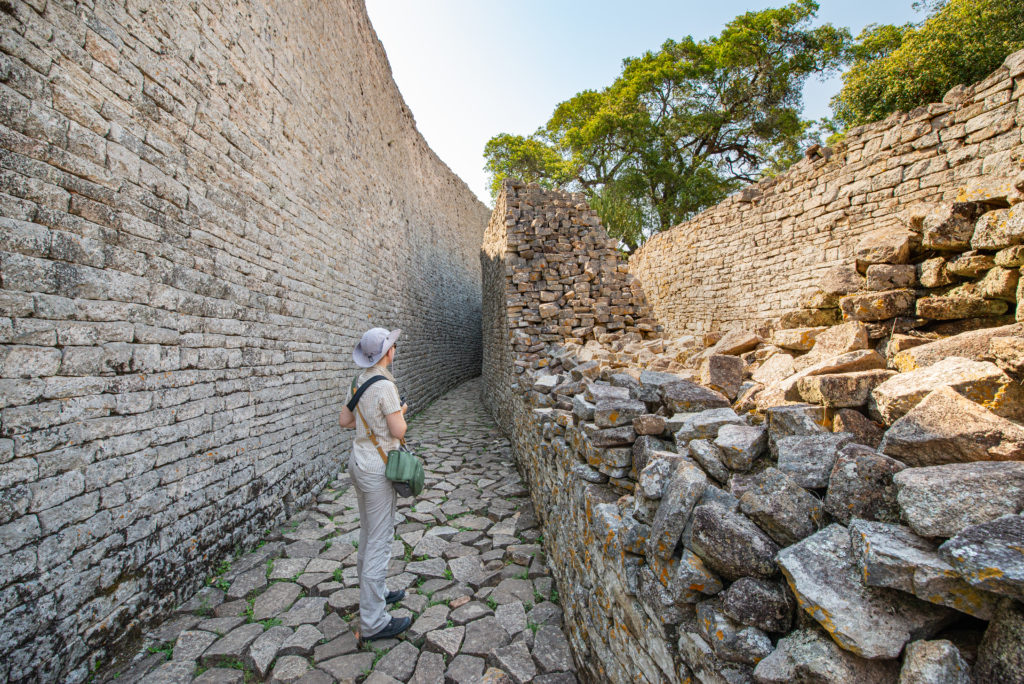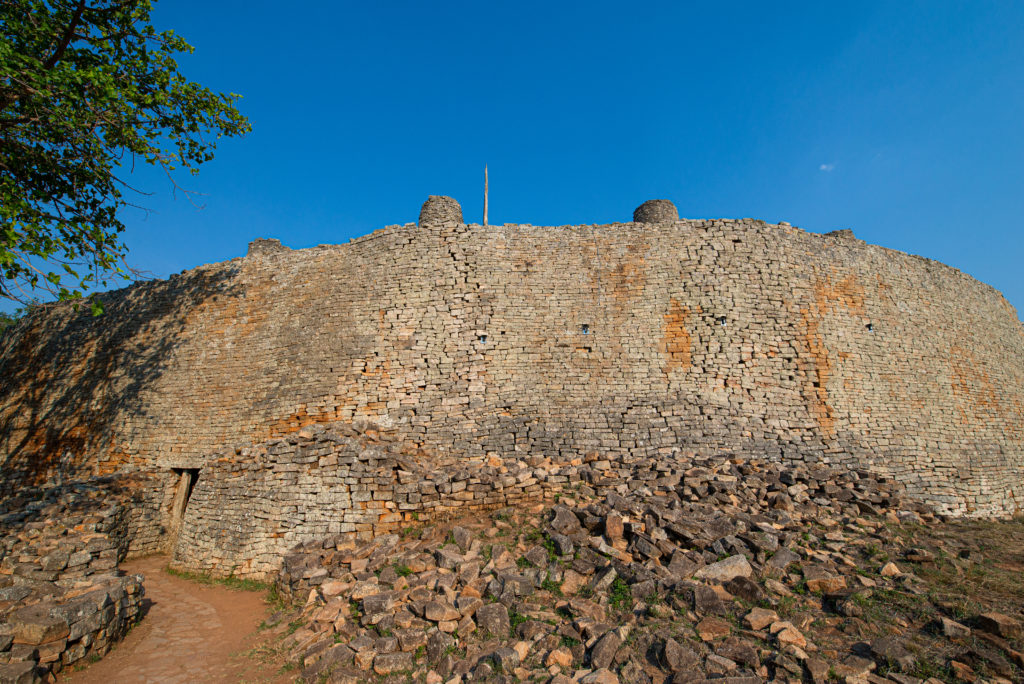
There once was an empire of opulent wealth and luxury. Gold was abundant. Houses were dressed in gold foil, and people in finest silk that came all the way from China, died blue with Indian Indigo. Women strutted down the clay paved lanes clad in nothing but sparkling jewels and glass pearls. Walls were erected from stones carried from near and far so that those who had didn’t have to mingle with those who had not.
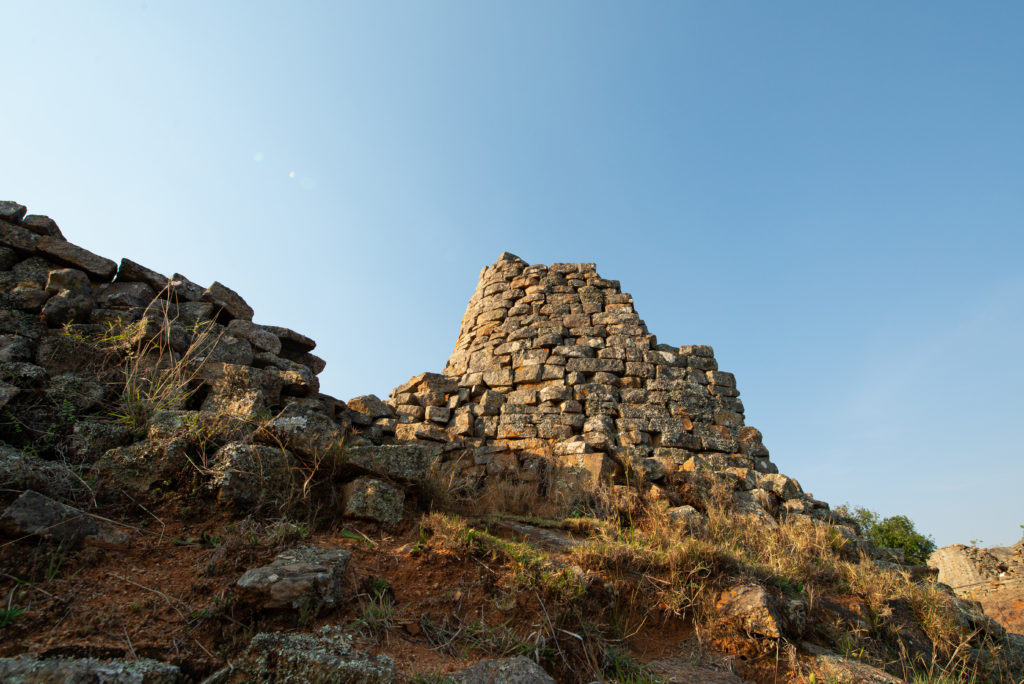
A thousand years later, little remains of this ancient grandezza. A few pearls found scattered by the Aloe excelsa trees, and broken pieces of terracotta buried in the dry African soil. Yet the walls are still standing. Battered by time and weather – and rusty, it seems. But the orange veil is lichen, tiny creeping flowers with petals like delicate lace, which in the run of centuries, have silently embraced the stones. No one, but those lichen, remembers what happened behind these walls. And they don’t tell.
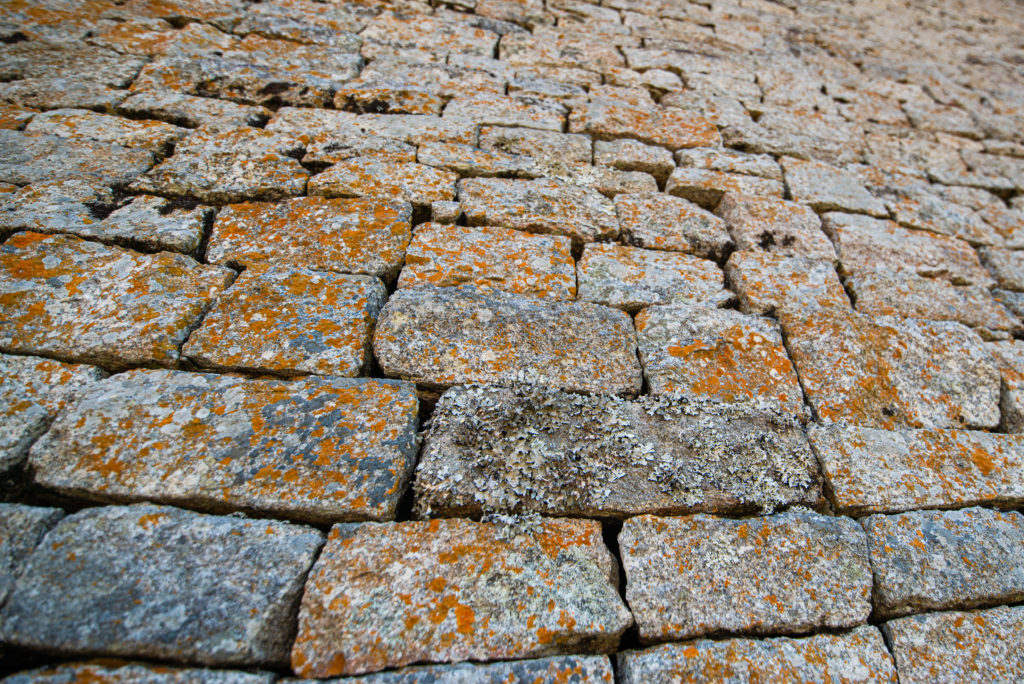
The ancient walls hold spiritual meaning, though, for the modern local people who live here nowadays, the Shona. The site is now a UNESCO world Heritage Site, its Shona name not only lent its name to this site, but to the entire country, and bestowed a unifying identity to the nation: Dzimbabwe, House of Stone.
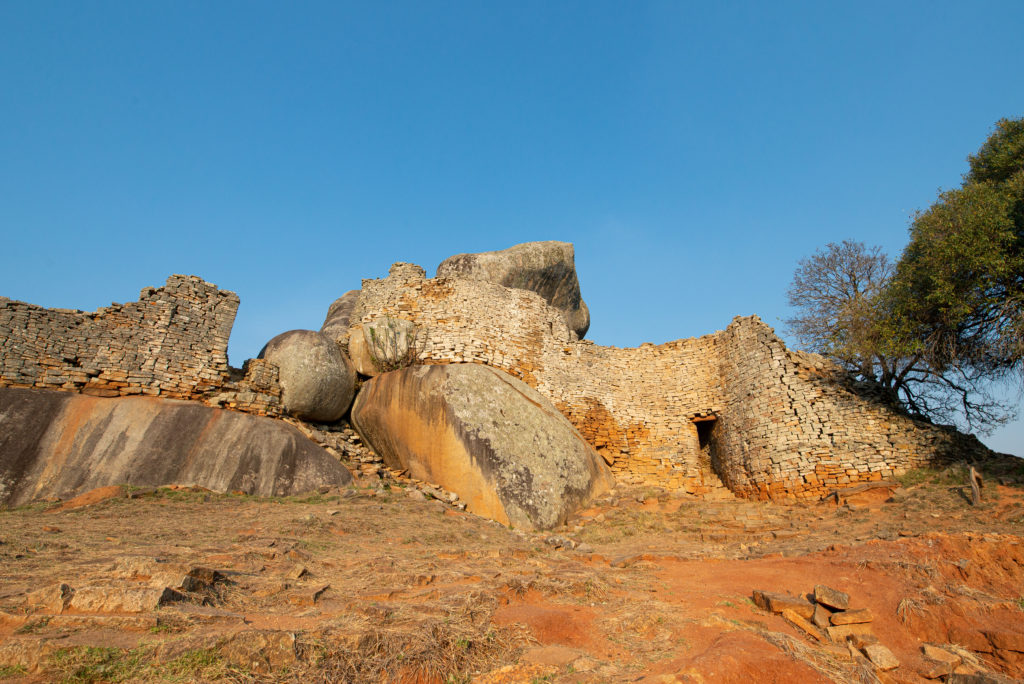
So little was known, so forgotten was this mysterious place and those who lived in these stone settlements that fabulous speculation flourished. The European and American explorers and adventurers, the colonizers who came across the walls couldn’t believe that a black African tribe was capable of constructing such a monument that rivals Notre Dame Cathedral, or St. Peter’s Church. The Phoenicians must have built those walls! Or the Arabs! The German explorer Karl Mauch, who was first to report of the ruins of Zimbabwe to western media in 1871, claimed it was Ophir, the biblical city of King Solomon. Some explorers went as far as reconstructing the walls to better fit their Euro-centric, Christian view of the world.
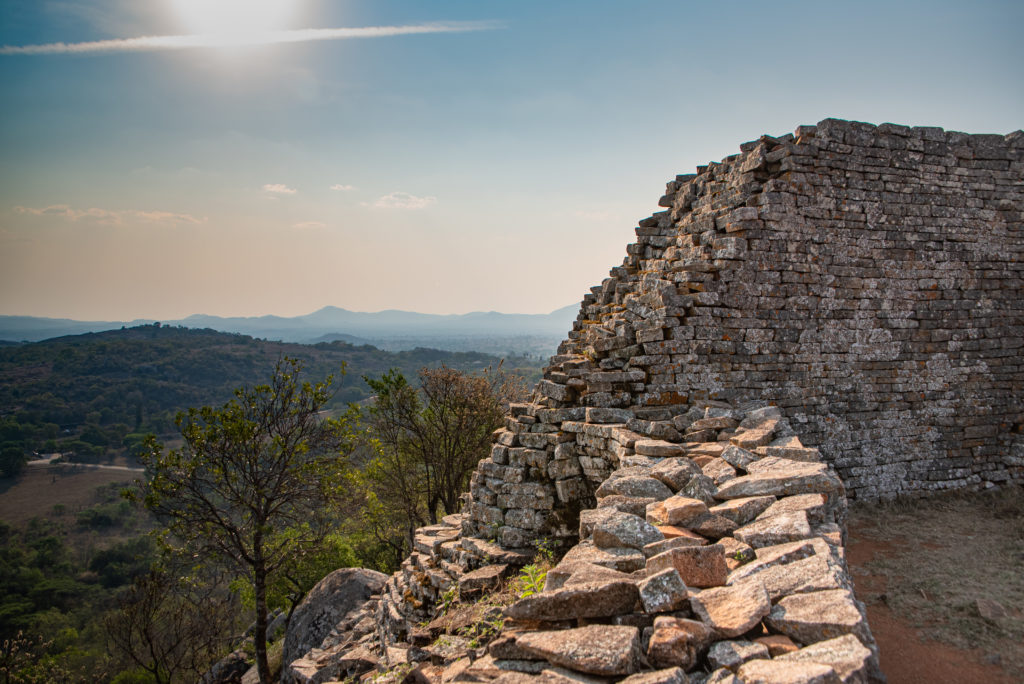
What evidence-based science has found out in the meantime, though, is no less fascinating. Based on recent findings – the walls, golden artefacts, iron weapons – and sociological cultural research, the ruins of Great Zimbabwe are the remains of a grand settlement of the ancestors of today’s Shona people.
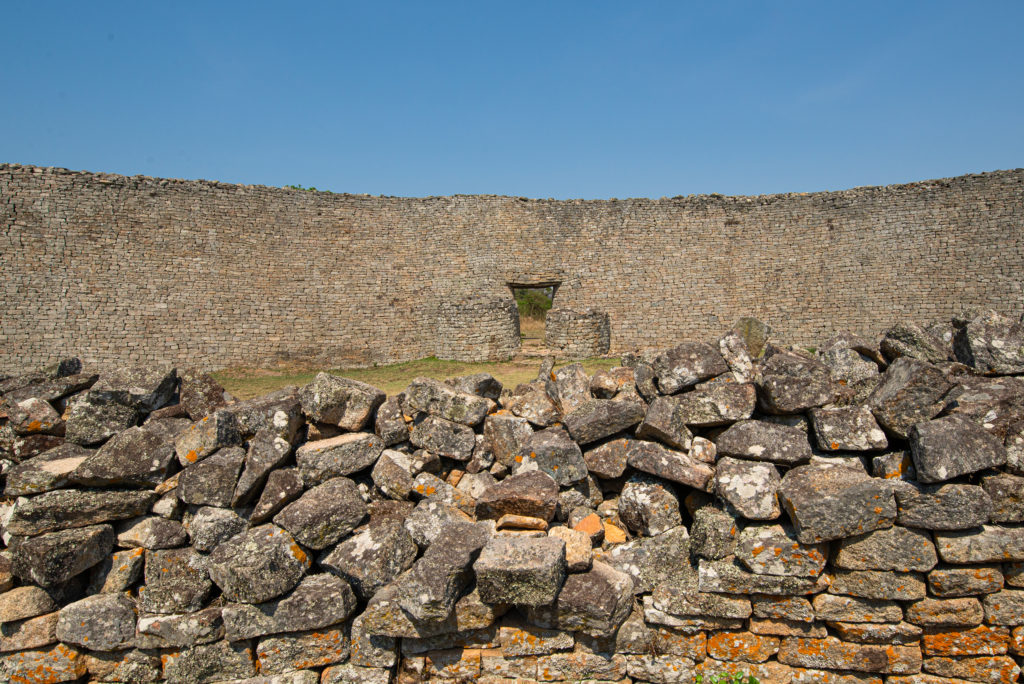
The empire lasted for a few hundred years, counting at its heydays a population of 18.000 – the biggest city in sub-Saharan Africa of its time. It was a trading center entertaining connections with places as far as China, mining gold, raising cattle and cultivating the land, a land that –according to research – at the time was fertile enough to not only sustain the city with grains and wild fruit, but even provide for medicinal needs. But why then did the empire fade into oblivion?
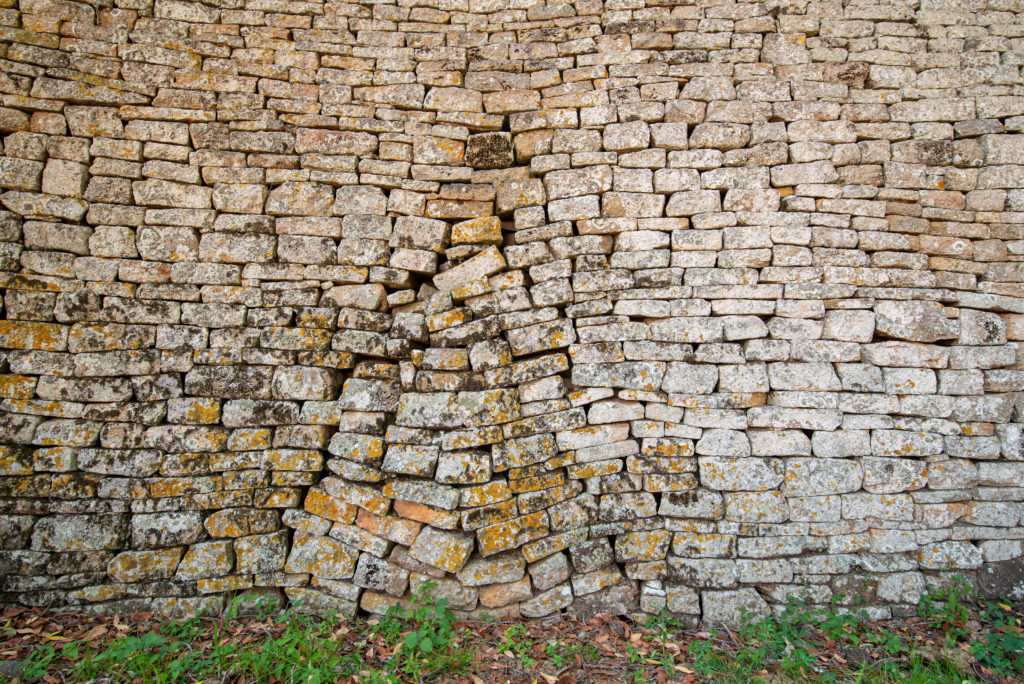
What’s most striking about Great Zimbabwe is its strict social order. There were two groups that lived strictly segregated. The elite – the king, his senior administrators, military men and spiritual leaders and the royal family – lived in the above mentioned luxury. The other group were the ordinary people, the craftsmen, and the administrators. The farmers, who cultivated the land, and miners who dug up the gold, did not even live within the stone settlement. Why did this second, much larger group sustain the decadence of the first group? Why did they even build those impressively high walls under the scorching African sun – in a time and society that knew no slavery? Why did – as research suggests – those who built the very walls that separated them from the wealth and abundance – do so voluntarily?
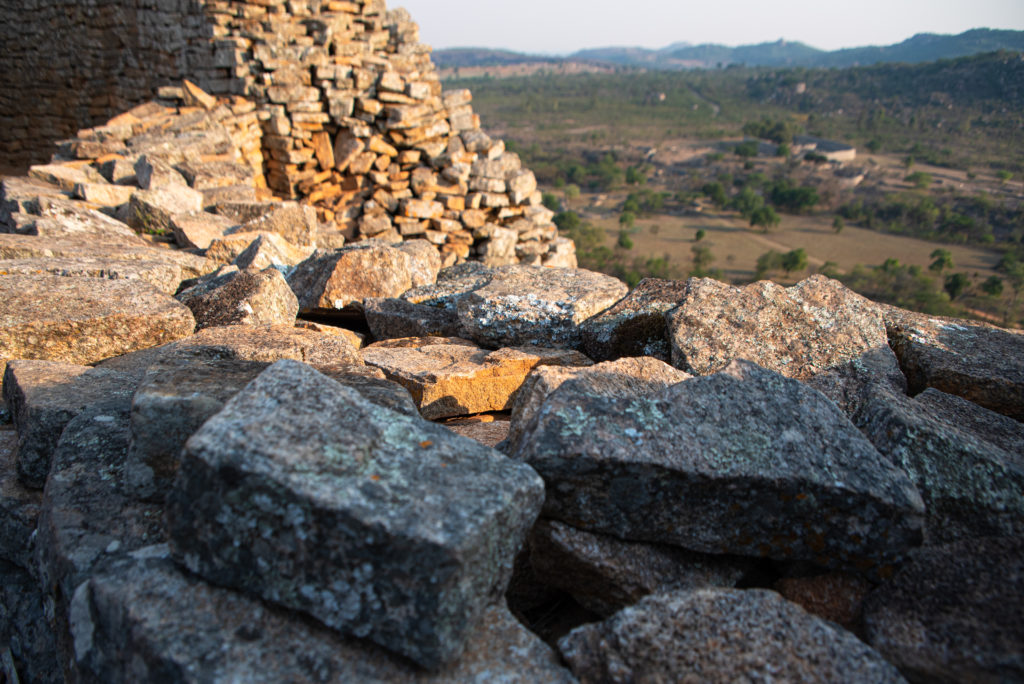
Visiting Great Zimbabwe requires some basic fitness level. The ascent to the king’s quarters on top of the hill is steep and slippery. Exhausted from the climb, one cannot fail to be overwhelmed by the stone formation on top. Wind and weather have carved the shape of an Eagle’s head into stone. A shape that has also been recreated in smaller stone statues that were found placed on various places within the site. The eagle, that is now featured on Zimbabwe’s flag, and five other birds, or rather birds with human attributes, bird men. These statue had been robbed by fortune hunters, but were returned and can now be viewed in the little museum at the site.
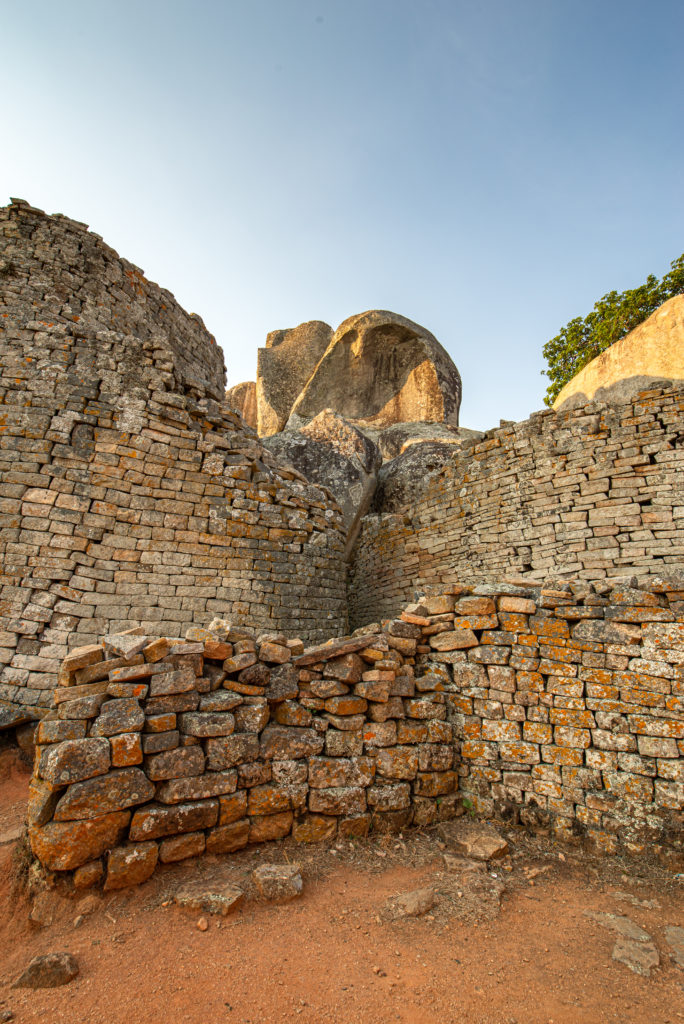
Birds were symbols of deities in this old culture. Did the king, who lived high up in the sky, and whom the rest of the population never got to see, and his entourage make the rest of the society believe they were of divine descent? Of direct descent of the Fish Eagle, maybe, or the Batteleur Eagle? And did they build the walls so that people wouldn’t find out, that they were just mortal ordinary beings after all? Was there even a king, or just the illusion of one that subjected the people?

The Fish Eagle is the original Totem of the Shona people. In their culture, a totem is an emblem – mostly an animal or a tree – of a family or dynasty. Today, there are 25 different totems in the Shona people, but the Eagle is their national bird, represented on the Zimbabwean flag.
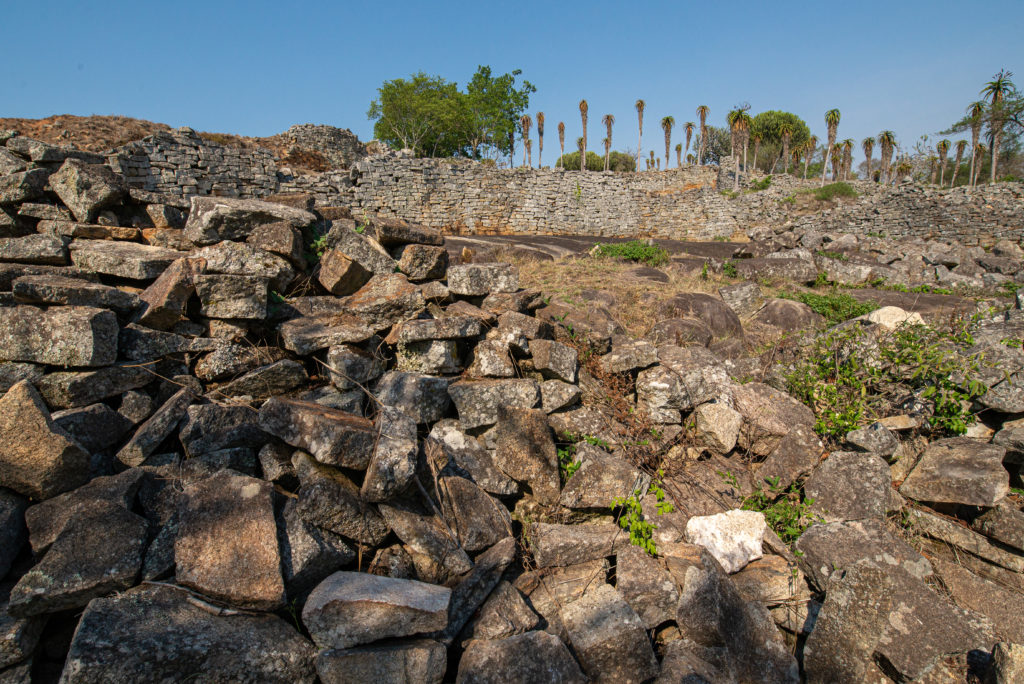
In the run of its existence, stone masonry improved in Great Zimbabwe. Different kind of walls are found on the site, with different decorations. The Chevron pattern as seen below is now regarded a typical Zimbabwean style, frequently used in modern design.
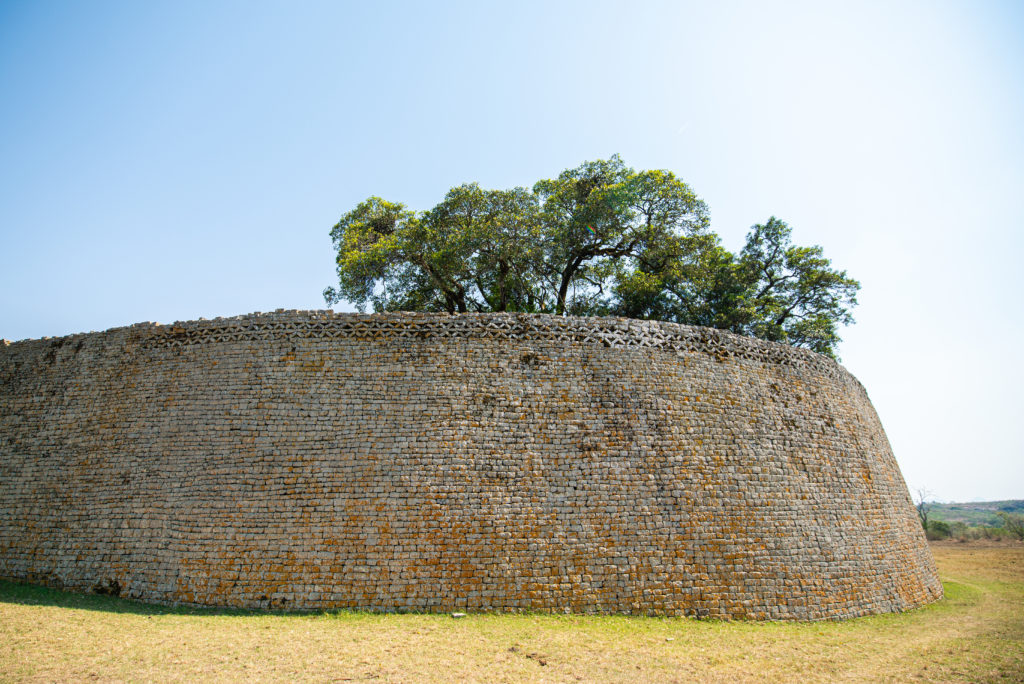
Great Zimbabwe is not the only stone ruin found in Southern Africa. But it is the biggest of these sites. No one knows, why these elitist, materialist systems, that were so unlike the localized chiefdoms that can be found in surrounding Africa, ceased to exist.
Climate change is one explanation, there was in fact a small ice age. Depletion of soil another, Great Zimbabwe was densely populated and restraint none of its virtues. Maybe unleashed consumption doesn’t go down well with history. Maybe injustice.
